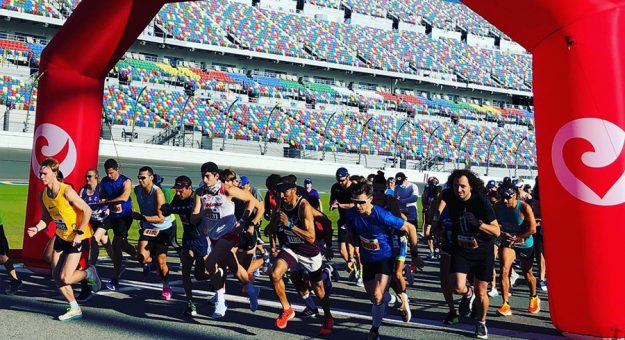WILMETTE, Ill. — Race track operators continue to change the playbook regarding their futures in a post-pandemic world.
This month, we will take a look at how circuit leadership has pivoted to adjust to the changes in society and the stresses the pandemic and the resultant restrictions have had on race tracks’ finances.
Last year, racing took the black flag for a few months because of the surge of COVID-19. Slowly, activity returned with a few maverick short tracks playing loose with local restrictions.
The larger venues hosted NASCAR races without spectators a mere 10 weeks after the pandemic began postponing races in bunches. The industry has been lauded for its return to live competition. This would not have been possible without a comprehensive multi-scenario approach involving participation by all stakeholders.
The monetary impacts were deep.
The publicly traded Formula One Group’s revenue was down almost 40 percent and the organization lost several hundred million dollars in operating income. This reflected a loss in races, lower broadcast fees, renegotiated sanctioning agreements and reduced sponsorship and advertising inventory.
Private track operators NASCAR and Speedway Motorsports had all operations disrupted by the inability to host live events with fans in attendance. This led to increased debt leverage and lower operating cash flow. The multiyear television contracts provided higher broadcast revenues at a nice margin level, which helped to offset the revenue declines in admissions, food, beverage and merchandise categories.
Part of the concern for sports facilities may be under-utilization of these properties. Operators must be creative and reimagine purposes for the venues to help offset the costs of operation.
Race tracks excel at keeping their places busy. They are adaptable and flexible. Their large footprint and scale of operation offer many advantages.
The list of activities at race tracks is impressive. It is typical for many of these facilities to host nearly a thousand events per year. Multiple events from morning to night is the norm with quick and efficient turnarounds keeping the operations staff busy.
A leading global triathlon festival race series, Challenge Family, selected Florida for its return. Daytona Int’l Speedway and Homestead-Miami Speedway hosted professional and amateur athletes for competition. The races were broadcast live around the world via various social media platforms.
The unique layout and attributes made the speedways the perfect place to host triathlons. Swimming in Daytona’s Lake Lloyd, cycling the interior road course and running on the high banks provided an action-packed race in a self-contained, non-spectator environment.
While the rental fees from hosting these events were probably not material, it proved that existing infrastructure can be utilized for non-traditional activities. The triathlon’s on-screen graphics and virtual race enhancements were powered by NASCAR Productions and its broadcast technology partner, SMT.
The ultimate goal is to return fans to the grandstands. The increased deployment of vaccines provides an encouraging sign. Tracks have safety rules in place that limit attendance according to local regulations. Experts feel that plans with limited attendance that allow for physical distancing and masks worn properly are preferable. Fans must feel safe and trust that their health is being safeguarded.
The growth and success in live-streaming may impact at-track attendance. The live competitive action and on-site experience provided by the promoter will be key to driving this revenue source. Multi-screen usage and digital technology with curated content during the week leading up to events will keep fans engaged away from the track.
Most racing series are planning for full schedules this year. There have been early season adjustments, which is to be expected as locations vary in their reopening guidelines. Postponed events may be made up later in the year, providing an opportunity to recapture revenue, similar to with rained out events.
Overall, we can expect the financial aspects of the year ahead to be favorable, challenging tracks, series, teams and fans in new and unexpected ways.
